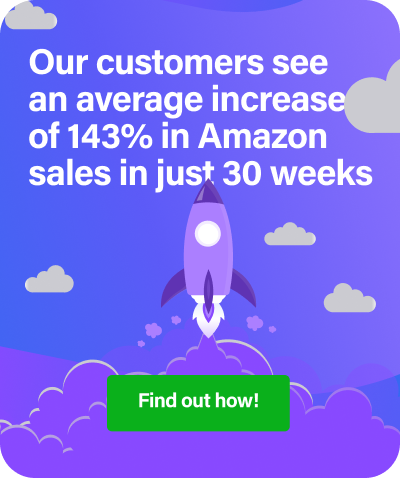One of the most dangerous things you can do as an ecommerce merchant is settling on something that works and never changing it. Being static is one of the most surefire paths to failure, as you can bet your competitors are constantly keeping their eyes out for the next trend that’ll benefit them. But with a little help from RepricerExpress, you can improve your webstore product pages so that you’re always getting the best out of the information around you.
1. Use Professional Photos
You don’t have to be a Patti Smith or Ansel Adams with your camera. All you have to do is remember things like:
- Shoot against a white or neutral background
- Set your camera to high resolution instead of low
- Balance your camera on something (i.e. tripod, table) to reduce/eliminate camera shake
- Move in close to highlight important details and features
- Experiment with dynamic angles instead of always shooting straight on
- Work with casting the light on from the side instead of from directly behind you
- Divide your subject and scene into thirds
2. Complement Your Images with Videos
Photos are great, yes, but they’re still and don’t tell as much information as a short video does. Not everyone has that fantastic spatial ability to rotate an image in their heads and picture how it’s used, so connect the missing dots with a video. Image to videos, on the other hand, offer a dynamic and immersive experience that allows for a more comprehensive understanding of the subject matter. Show your buyers what something looks like from different angles, how it’s used, the level of durability it has and any other special tweaks or benefits.
3. Have a Special Section Just For Reviews
You can tell your buyers everything you know about a product, but it’ll still be biased information because you have a vested interest in it. But when you balance it with real reviews from real people, then shoppers get a more accurate idea of what that product is actually like.
4. Perfect Your Elevator Pitch
To paraphrase the saying ‘if you can’t explain it simply, you don’t understand it well’, you need to be able to inform your buyers of your business in a matter of seconds. All you have is a brief snapshot of time in which to tell shoppers what you sell and why they should trust you, so streamline your website to the point that you only need three seconds to get your message across.
5. Check Your Copy for Spelling and Grammar Mistakes
Spelling — when words appear the same as they are in dictionaries. Grammar — when they follow the rules of a particular language. You should never ignore one (or both!), as that’ll make your copy come off as amateurish. Take the time to reread what you’ve written, Google anything you’re even the least bit unsure about, and have a fresh set of eyes proof it when you’re done. Really, one of the worst things you can do for yourself is not having your writing adhere to a basic level of competency.
6. Show, Don’t Tell
Know why Hemingway is considered one of the greatest writers of all time? He just about nearly eliminated all adjectives from his writing so that his stories show as much as possible. He didn’t waste time fluffing things up; Hemingway arranged words into sentences that were punchy and showed exactly what was going on. Give yourself the same writing exercise of eliminating adjectives and see just how much your copy improves.
7. Know Who Your Audience Is
Selling expensive wristwatches? Use elegant language that speaks to a mature demographic. In the market of selling sports equipment? Use shorter sentences with more current lingo. Have an inventory of children’s products? Use bright words and tell parents how it’ll make their lives easier whilst enriching the lives of their children. You never want to use the same kind of tone across the board, but rather address each market as specifically as possible.
8. Remember That Less is More
If you’re ever in doubt of how to design the layout to improve your webstore product page, err on the side of minimalism. Imagine yourself walking into two rooms:
- Room 1 has white walls, white floor and white ceiling. There’s one table with two chairs around it, and a red box on top.
- Room 2 looks like a teenager’s room with clothes on the floor and unmade bed, walls filled with posters, a desk covered in small knickknacks and accessories, an open closet that’s filled with clothes, curtains half-pulled across the window and the same red box in the middle of the room.
If you’re told to walk into each room and remember the colour of the box, which room will it be easier to do it in? Apply the same concept to your webstore and avoid overwhelming your buyer with too much design clutter.
9. Put Your Contact Information in an Easy-to-Spot Place
The bigger your business, the more you’ll be contacted, whether it’s queries, complaints or compliments. You’ll obviously want to avoid the middle one as much as possible but it’s inevitable that you’ll hear from people. However, if you put your contact information in a super visible spot, you’ll be giving the impression of transparency, which is something that all shoppers love. They want to know that you’re being forthright and upfront with them — two qualities especially important in the online world, where buyers have to make a bigger leap of faith with you than they would if shopping in person.
10. Make Everything Fast and Easy to Load
Remember the days of dial up when trying to do something like watch a video was just so silly because of how long it’d take to load? Yeah, that problem still hasn’t gone away with the addition of high-speed internet. Unfortunately, pages and images and text still take a while to load, which really hurts your chances of improving your webstore product page efficiency. Do things like:
- Compress your images so users aren’t waiting forever to see what your products look like. You can either reduce the size of your images or use something like JPEG Mini to accomplish this.
- Use an Apache module like mod_pagespeed to decrease latency and bandwidth (or, in other words, make your pages load faster).
- Regularly monitor the plugins you’re using and whether there’s something more efficient you can install instead.
- Cache on a regular basis to avoid overload
- Eliminate all unnecessary scripts. Usually, this comes in the way of duplicate scripts, but you can also move scripts to external spaces to make pages load faster.
- Get rid of any whitespace in your source code, using something like an HTML optimiser if necessary.
Once you get the hang of how to improve your webstore product pages, the next step is capitalising on the increased traffic. RepricerExpress is the best way you can do that because as the hits come rolling in, you’ll need to competitively price your products to keep exciting your shoppers. But to excite you, we’ve got a free 15-day trial where you can test drive things and see what you’ve been missing out on all this time.
[fusion_builder_container hundred_percent=”yes” overflow=”visible”][fusion_builder_row][fusion_builder_column type=”1_1″ background_position=”left top” background_color=”” border_size=”” border_color=”” border_style=”solid” spacing=”yes” background_image=”” background_repeat=”no-repeat” padding=”” margin_top=”0px” margin_bottom=”0px” class=”” id=”” animation_type=”” animation_speed=”0.3″ animation_direction=”left” hide_on_mobile=”no” center_content=”no” min_height=”none”][xyz-ihs snippet=”Join-Newsletter-Blog-Footer”][/fusion_builder_column][/fusion_builder_row][/fusion_builder_container]


